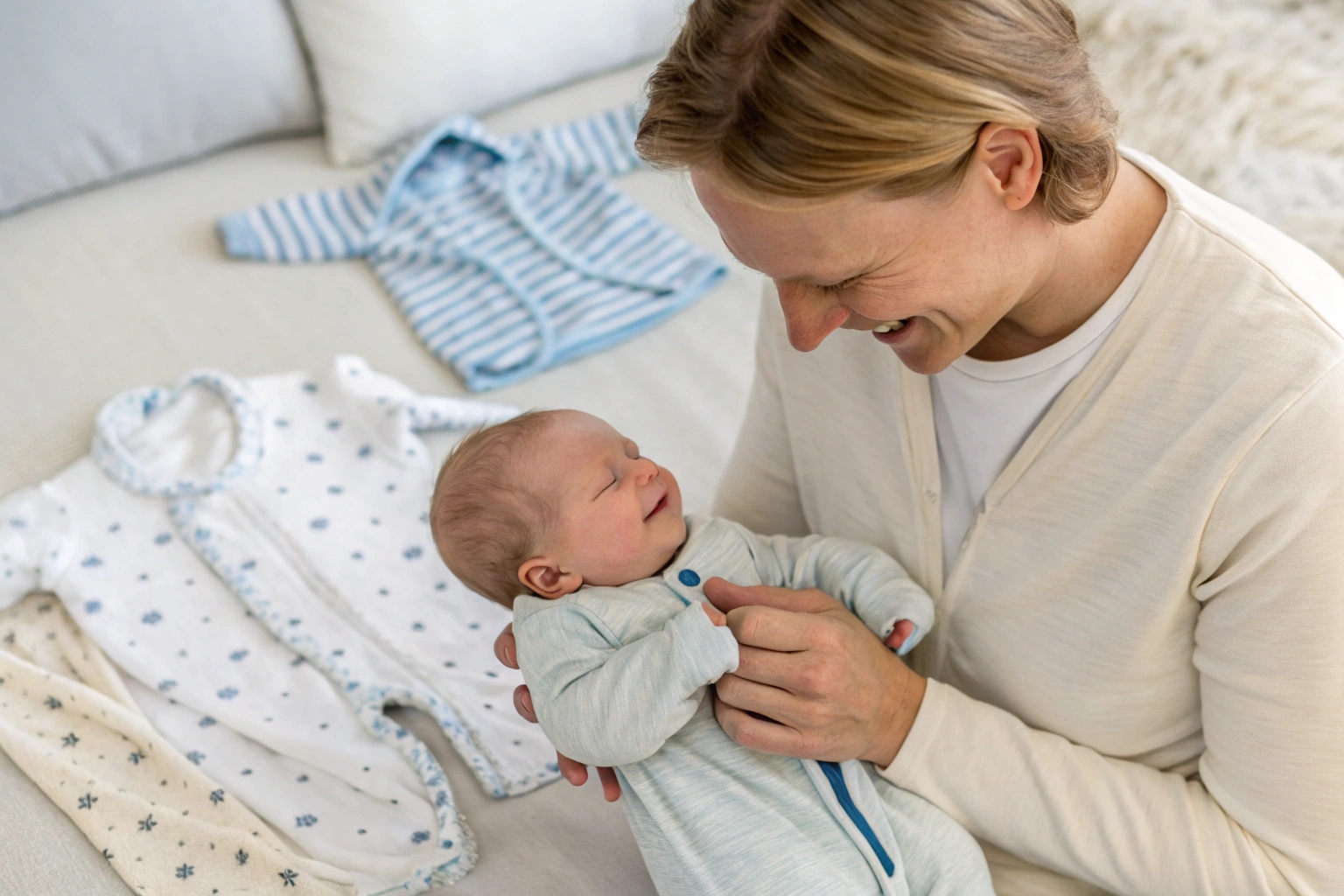When dressing a baby, parents often wonder if slightly loose clothes are safe—or if they should opt for a snugger fit.
Yes, it’s okay for babies to wear slightly loose clothing, as long as it doesn’t interfere with safety or movement. A bit of extra room often supports comfort and growth.
This article breaks down when loose clothing is beneficial, when it’s risky, and how to choose the right fit at every stage.
How Loose Is Too Loose for Baby Clothing?
A little extra space is fine—but clothing that’s oversized can pose safety issues, especially for newborns.
Clothing is too loose when it slips over the baby’s face, tangles during movement, or gets caught while sleeping or being held.
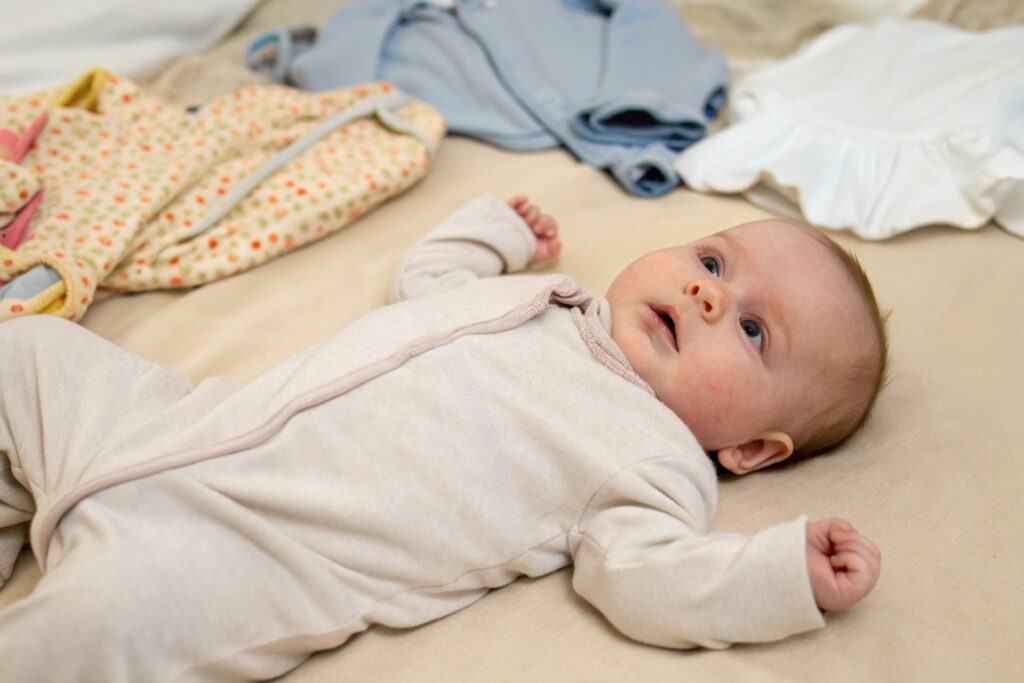
Signs that babywear is too loose:
| Clothing Area | Red Flag Example |
|---|---|
| Neckline | Slides up to cover mouth or nose |
| Sleeves | Hang past fingertips, get caught on objects |
| Pant legs | Pool around feet, cause slipping or tripping |
| Waistbands | Fall down or twist easily |
| Shoulders | Constantly slip off or sag backward |
A general rule: baby clothes should be loose enough for comfort and movement, but snug enough to stay securely in place.
Look for styles labeled “true to size” or with adjustable features like snap shoulders or elastic waistbands for better fit control.
Why Some Roominess Can Be Good for Baby Comfort?
Babies grow fast—and tight clothes can feel restrictive, especially with diapers, layers, and constant body changes.
Slightly loose baby clothes allow room for movement, airflow, and growth, helping babies stay calm, cool, and comfortable.
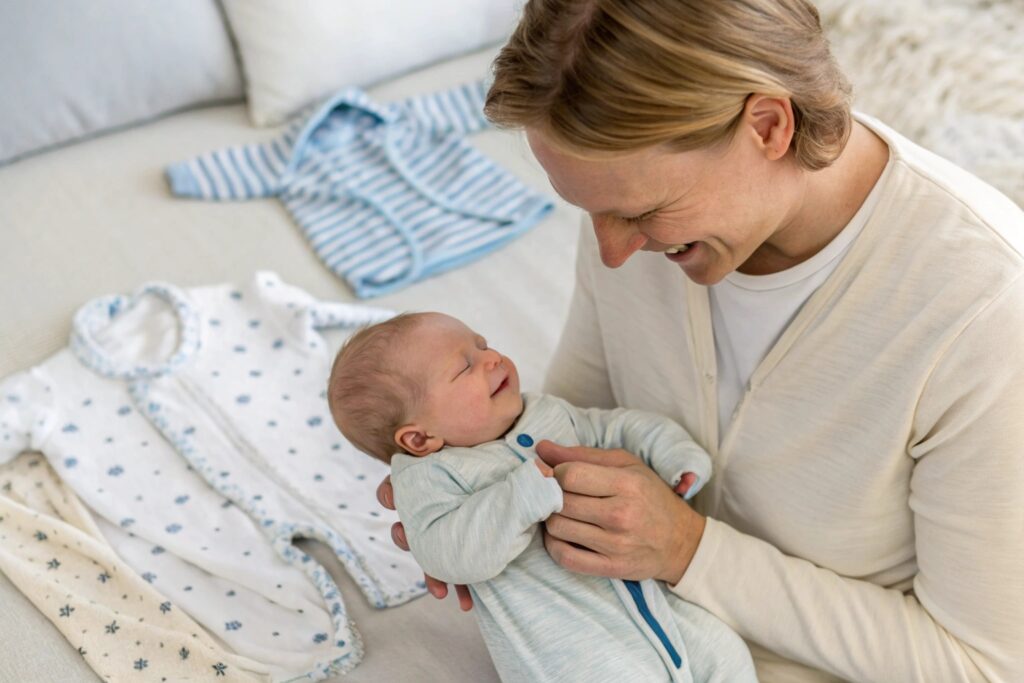
Comfort benefits of loose babywear:
| Fit Feature | Baby Comfort Benefit |
|---|---|
| Extra leg room | Better fit over diapers, easier kicking |
| Relaxed shoulders | More freedom during tummy time or crawling |
| Breathable spacing | Reduces sweating and rash risk |
| Room to grow | Extends wear time between sizes |
| Flexible seams | Prevents skin irritation from rubbing |
In warm climates, loose-fitting cotton or muslin garments help babies regulate temperature and stay rash-free.
However, avoid extreme oversized fits, especially for newborn sleepwear, which should follow safety guidelines (e.g., snug-fitting pajamas for flame resistance in the U.S.).
Risks and Benefits of Loose-Fitting Babywear?
While a bit of looseness supports comfort, overly large clothing can present risks—especially during sleep, feeding, or play.
Loose-fitting babywear offers benefits like comfort and flexibility, but must be used with care to avoid choking, tangling, or tripping hazards.
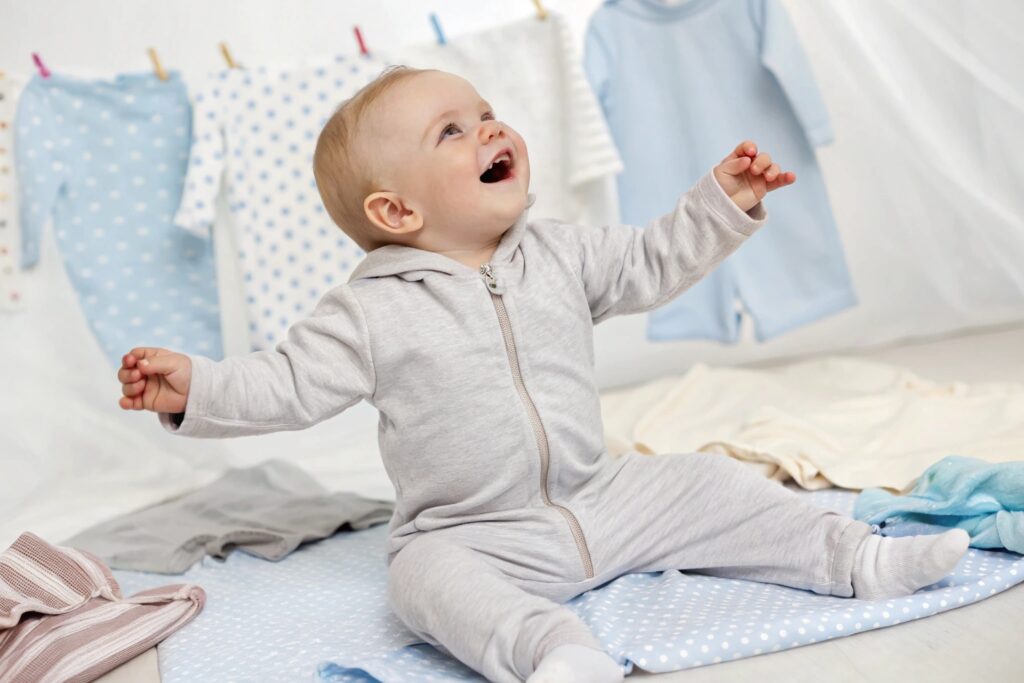
Risks vs. benefits of loose babywear:
| Benefit | Risk |
|---|---|
| Comfortable movement | Fabric may cover face during sleep |
| Longer wear as baby grows | Clothes may bunch and restrict movement |
| Easier diaper access | May slide off during crawling |
| Gentle on sensitive skin | Sleeves or hems may catch on objects |
For sleep, the AAP recommends snug-fitting pajamas for babies under 12 months to avoid suffocation hazards.
During the day, slightly loose playwear (with secure shoulders and proper necklines) can offer ideal comfort.
Tips for Choosing the Right Fit for Growing Infants?
Finding the perfect fit isn’t just about age labels—it’s about shape, activity level, and fabric.
Choose babywear based on real measurements, stretchability, and smart design features that support safety and flexibility as your baby grows.
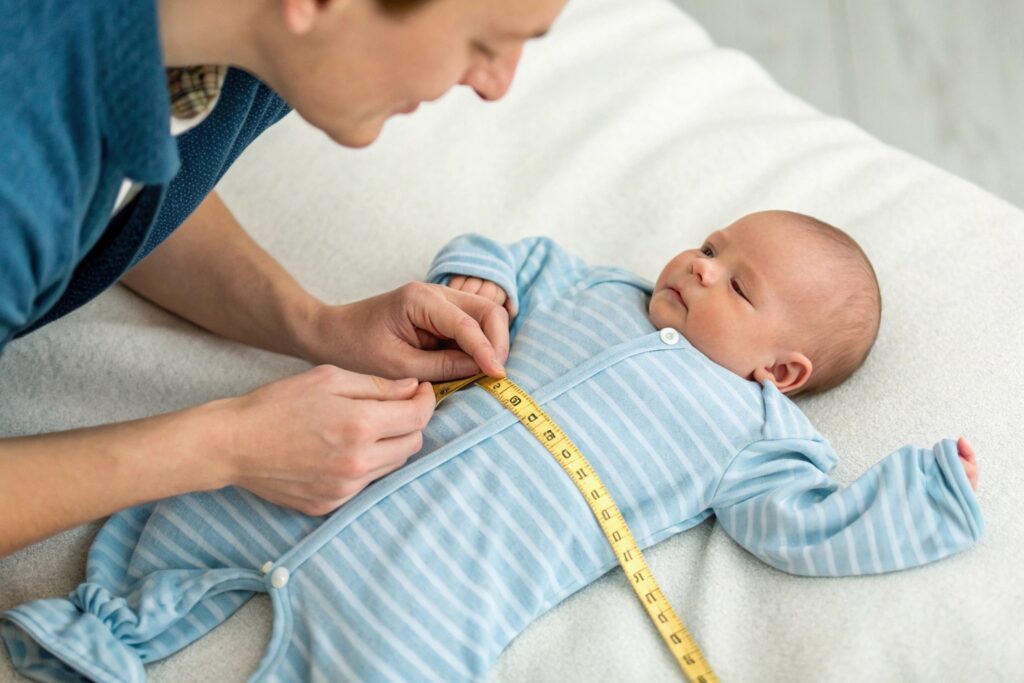
Fit tips for parents:
| Fit Tip | Why It Helps |
|---|---|
| Check weight and height charts | Brands often size by age—but babies vary |
| Look for stretch or ribbed fabric | Adapts better to growing bodies |
| Avoid drawstrings and extra-long hoods | Reduce entanglement risk |
| Try kimono-style tops or envelope necks | Easier to dress without struggle |
| Buy slightly big, but test the neckline and hem | Ensure it stays in place safely |
Some brands offer dual sizing (e.g., 0–3M, 3–6M), but others run large or small—always read reviews when shopping online.
At Fumao, we recommend pre-washed, soft-stretch cotton for everyday use and include sizing notes based on common body types (chubby, tall, petite) for better buyer guidance.
Conclusion
Yes, babies can wear slightly loose clothes—as long as the fit doesn’t compromise safety. A gentle, roomy fit offers comfort and flexibility, but parents should still check that garments stay securely in place, especially during sleep and play.

